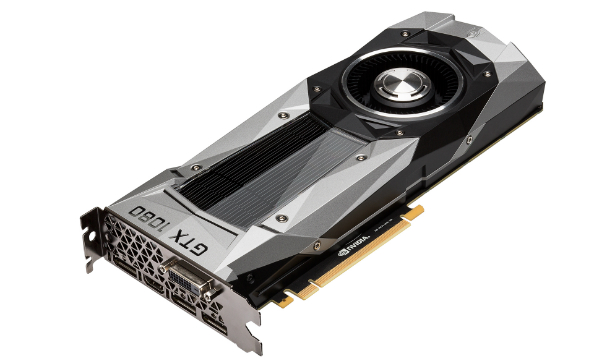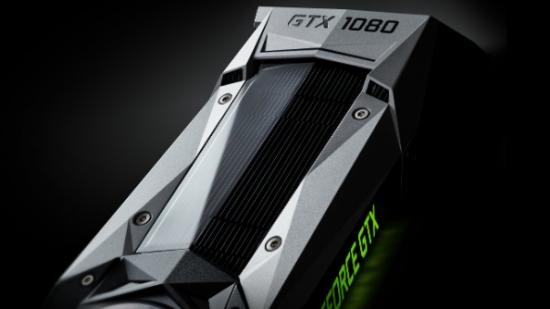It happened – NVIDIA finally unveilied their first Pascal-powered graphics cards during a livestreamed ‘special event,’ earlier today (or at 2am in the middle of the bastard night if you live in the UK). CEO Jen-Hsun Huang revealed both the flagship GTX 1080, available from 27 May at $599, and the 1070, which will follow on 10 June onwards at a $379 price point.
Into pushing your hardware hard? Try the best VR games.
Huang said “several billion dollars” went into the r&d of these Pascal cards, built around a fiddly 16nm FinFET process. I wouldn’t get caught up on that though, Jen-Hsun, because those r&d bucks gave you a lot to brag about during the 1080 and 1080’s reveal.
For example, the GTX 1080 is “at least twice as fast” as the current flagship card, the Titan X, in certain VR applications. And lest we forget: the Titan X costs $1000. It’s significantly faster than the $600 980 ti too, says Huang. You’d expect that from a new generation of architecture, though.
The combination of Pascal GPU and smaller production process is the key to these performance breakthroughs, and in addition the 1080 also comes equipped with Micron GDDR5X memory capable of a 10GBps memory clock. The cheaper 1070 features regular old GDDR5 memory, by contast. If you’re into TFLOPS, let’s talk numbers. The 1080 can push 9 TFLOPS from its 7.2 billion transistors say NVIDIA, way up on the Titan X’s 7 TFLOPS. As for the GTX 1070, the card most adopters will opt for if last generation is any indication, it’s 6.5 TFLOPS.
The increased efficiency of the new-gen Pascal GPUs has enabled NVIDIA to clock the 1080 up to 2144MHz using its own air cooler, and dramatic increase from the 1075MHz speeds of the Titan X and 980 ti. That’s about it for technical specs from NVIDIA for now though – we won’t know all the inner gubbins of these new cards until they’re sent out to reviewers for benchmarking, and the complicated graphics flow forth.
What blows my mind on a personal level is that all those leaked images of the reference GTX 1080 turn out to be true:

It really is that angular refresh of the reference card design that blurry pictures have been proliferating for the past few weeks. It’s worth noting at this point that if you want the reference card, or the ‘Founders Edition’ as NVIDIA are billing it, you’ll have to buy it direct from NVIDIA for an elevated pricing – $699 for the GTX 1080 and $449 for the GTX 1070.
So, what happens next? Well, now we wait until 27 May and see what cooler designs the likes of Asus, MSI, Zotac et al have prepared for the cards, how many they have in stock, and whether the scarcity causes a spike in price upon release. Let’s hope not, eh?
As for whether it’s time for an upgrade – Jen-Hsun Huang spoke a lot about VR in the reveal livestream, so if you’re a content creator for that platform and currently struggling with a 980 ti then yep, it’s upgrade time. Perhaps the more pertinent question is for the squillions of people who bought a GTX 970 this generation – do they need to upgrade too? Does the pricing make sense? Truthfully, no-one can make that call until the benchmarking begins. When it does, we’ll keep you posted.
More details on the GTX 1080 and 1070 reveal are available over at NVIDIA’s site.
